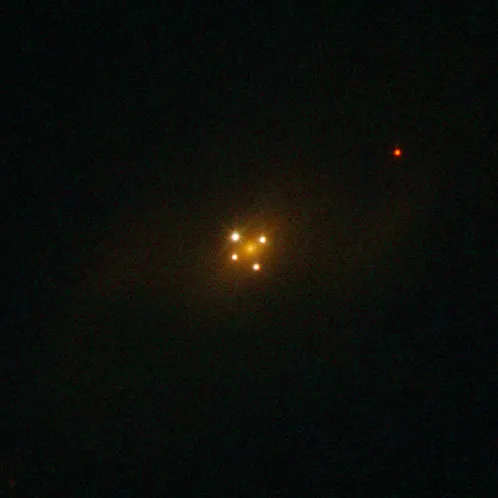Why Physics?
Fri Oct 16 2020
Early on, I developed an appreciation for astronomy. I was very fortunate in my high school years to become involved with the Royal Astronomical Society of Canada (RASC), where I was exposed to the effortless beauty of astronomical objects, and the wholesome enthusiasm of amateur astronomers. It is easy to see why that community is as welcoming and passionate as it is; the sky is packed to the brim with breathtaking visuals, and all it takes is some glass in a tube to witness—to experience—them. I dove right in, and have never fully left (you can see some records of my earlier days as an amateur astronomer in the gallery). But I did mostly leave, so why is that?
A large part of what makes the beauty of astronomy hit home for me is its grounding in reality. All of these astounding objects, the intricate seas and valleys on the moon, bands on Jupiter, nebulae and star clusters, they all exist in their own right. The sheer distance and scale of these objects is incomprehensible, but by viewing them through a telescope you are physically connected to them, you participate in a real event in which light reflected or emitted by something lightyears away lands in your own eye, and directly sends a signal to your brain. Personally connecting yourself to the rest of the universe in this way, it is not a stretch to connect the aesthetic beauty of a star cluster to the daily life of the stars within, and the laws that describe their entire existence. There, in the order and routine of Nature, I found what is to me a much more profound beauty.
So this is the point: to me, the beauty of astronomy is manifest, while the beauty of physics is more subtle but extremely fulfilling. Here’s an illuminating example, the famous Einstein Cross:

There’s no two ways about it, this is gorgeous. But what is it? Well the fuzzy blob in the middle is a galaxy, just floating around minding its own business. The four points around it, however, are an illusion. Those four lights are not distinct objects unto themselves, but instead images of a single, vastly more distant beacon, a quasar. The quasar is spatially located line-of-sight behind the galaxy, and so is directly obscured from us, but the mass of the galaxy physically distorts the shape of space around it so much that empty space effectively becomes a lens, one that focuses the image of the distant quasar into the four points we see. This phenomenon—dubbed “gravitational lensing”—is a robust prediction of Einstein’s General Theory of Relativity, the modern theory of gravity.
In my view, Einstein’s GR is the single most elegant theory in all of science, and it can be summed up in a single equation:
The particulars of this equation are complicated, but the essence is not. Simply put, this equation reads: “Geometry = Matter”,
So the aesthetic beauty of the Einstein Cross betrays a deeper truth about Nature, that the shape of space lives in an equilibrium with the matter content in that space, and the back-and-forth between the two is the source of what we perceive as gravity. This is just the tip of the iceberg; the wonderful world of quantum mechanics—and quantum field theory—contains so many similar elegant relations and laws…there is so much to explore.
And that is the answer to “why physics?” Astronomy is a gateway-science; it lured me in with majestic sights ripe for the picking, and opened the door for me to get a glimpse of the deeper abstract concepts that lie behind the structure of all things great and small. This is also why I feel so strongly about astronomy outreach, why I volunteer at the planetarium, and at sidewalk astronomy events. How many other people would be drawn to the intrinsic beauty of fundamental physics if they were offered the opportunity to personally witness other worlds and the grander scope of our universe? I don’t know, but I’ll do my part to find out.